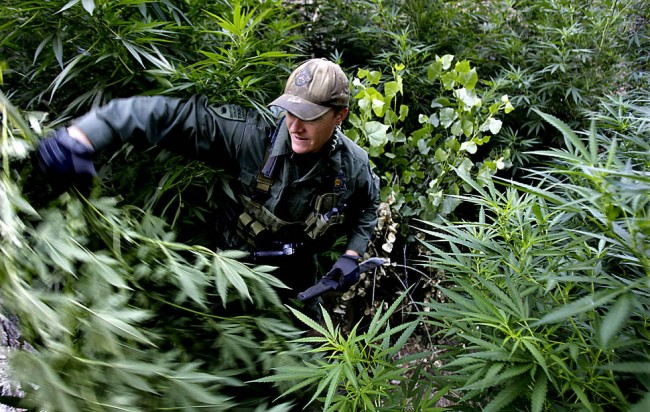” Cannabis as a medicine was used before the Christian era in Asia, mainly in India. The introduction of cannabis in the Western medicine occurred in the midst of the 19th century, reaching the climax in the last decade of that century, with the availability and usage of cannabis extracts or tinctures. In the first decades of the 20th century, the Western medical use of cannabis significantly decreased largely due to difficulties to obtain consistent results from batches of plant material of different potencies. The identification of the chemical structure of cannabis components and the possibility of obtaining its pure constituents were related to a significant increase in scientific interest in such plant, since 1965. This interest was renewed in the 1990’s with the description of cannabinoid receptors and the identification of an endogenous cannabinoid system in the brain. A new and more consistent cycle of the use of cannabis derivatives as medication begins, since treatment effectiveness and safety started to be scientifically proven.”
“Cannabis Sativa (cannabis) is among the earliest plants cultivated by man. The first evidence of the use of cannabis was found in China, where archeological and historical findings indicate that that plant was cultivated for fibers since 4.000 B.C.1 With the fibers obtained from the cannabis stems, the Chinese manufactured strings, ropes, textiles, and even paper. Textiles and paper made from cannabis were found in the tomb of Emperor Wu (104-87 B.C.), of the Han dynasty.“
“The Chinese also used cannabis fruits as food. These fruits are small (3 to 5 mm), elliptic, smooth, with a hard shell, and contain one single seed. The first evidence of the use of these seeds was found during the Han dynasty (206 B.C. – 220 A.D.). In the beginning of the Christian Era, with the introduction of new cultures, cannabis was no longer an important food in China, although, until today, the seeds are still used for making kitchen oil in Nepal.“
“The use of cannabis as a medicine by ancient Chinese was reported in the world’s oldest pharmacopoeia, the pen-ts’ao ching which was compiled in the first century of this Era, but based on oral traditions passed down from the time of Emperor Shen-Nung, who lived during the years 2.700 B.C. Indications for the use of cannabis included: rheumatic pain, intestinal constipation, disorders of the female reproductive system, malaria, and others.In the beginning of the Christian Era, Hua T’o, the founder of Chinese surgery (A.D. 110 – 207), used a compound of the plant, taken with wine, to anesthetize patients during surgical operations.“
“The Chinese used mainly the seeds of cannabis for medical purposes; therefore, it may be assumed that they were referring to that part of the plant when describing its medicinal properties. Until today, cannabis seeds continue to be used as a laxative by Chinese physicians. It is acknowledged that the seeds are practically deficient in D9-tetrahydrocannabinol (D9-THC), which is considered the plant’s main active constituent, and is mainly composed of essential fatty acids and proteins. Today some of these fatty acids are considered as having therapeutic effects, such as the g-linoleic acid, whose topical use is recommended for eczema and psoriasis, and its oral use for atherosclerosis, osteoporosis, rheumatoid arthritis, and other inflammatory diseases. In China, the medical use of cannabis never reached the importance it did in India.”
Read More: http://www.scielo.br/scielo.php?script=sci_arttext&pid=S1516-44462006000200015&lng=en&nrm=iso&tlng=en
1942-7611/asset/olalertbanner.jpg?v=1&s=4b27d6a6bed6b58a9935efe70e4f95efc39146bd)







